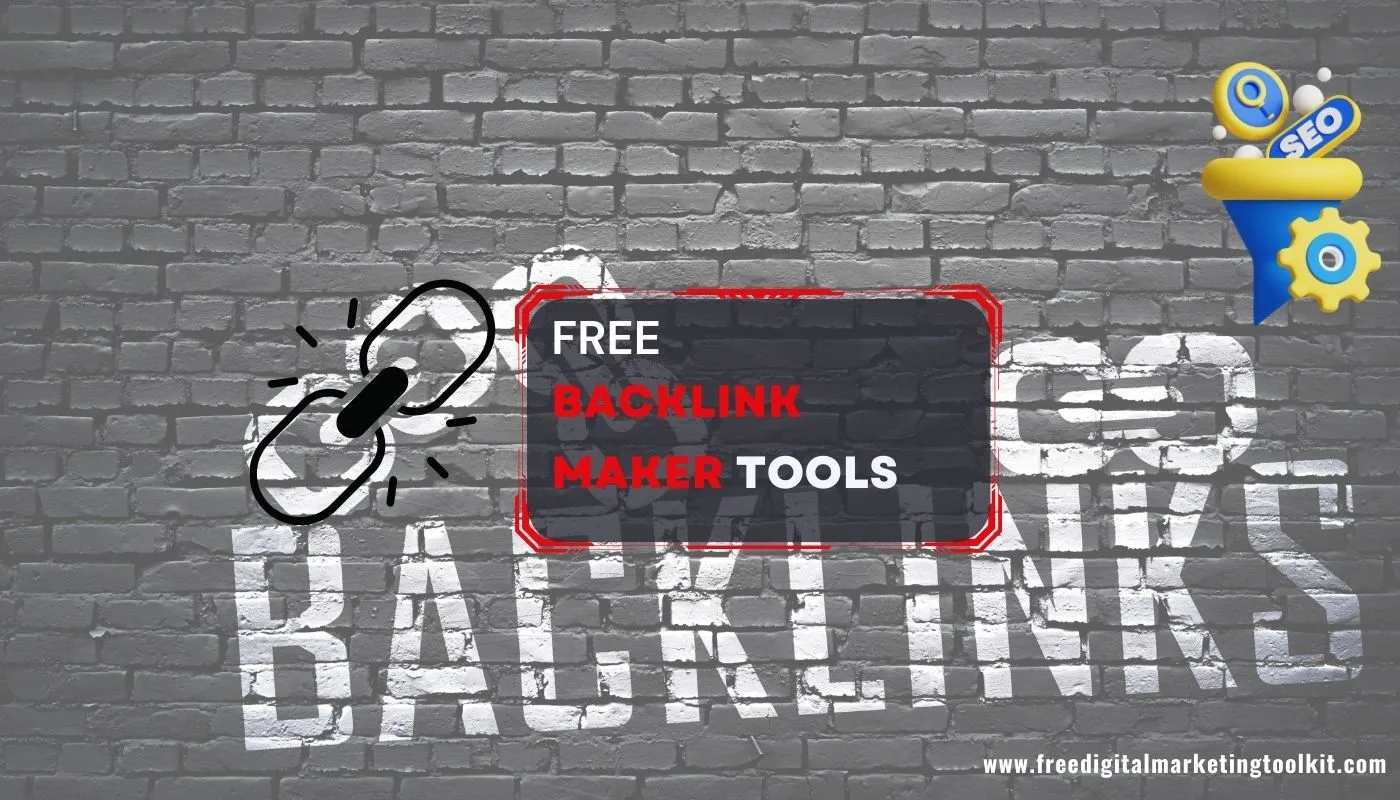
Are you searching Job for an SEO Specialist position? Let’s get you prepped, my friend. Below, you’ll find the best SEO Interview questions with their answers, along with insights that should set you up like a champ for your upcoming job interview.
Best SEO Interview Questions With Answers
Following are the most asked SEO Interview Questions, along with answers for beginners and experts who are going to take their SEO interview or preparing for their SEO interview:
1. What’s SEO, buddy?
Ah, the classic opener! SEO makes websites more noticeable on search engines like Google. Increased visibility attracts more eyeballs and thereby traffic.
2. Describe On-Page and Off-Page SEO.
On-Page deals with elements on your website. Off-Page? It revolves around backlinks and social signals away from your site.
3. Keywords. Explain.
These are words or phrases that folks type into search engines. Keywords guide the SEO strategy.
4. Ever heard of ‘Long Tail Keywords’?
Long Tail Keywords are phrases containing more than three words. Specific, they target niche audiences.
5. What’s a Meta Description?
This is a brief snippet outlining the content on your webpage. Generally, it’s under 160 characters.
6. Why do folks even care about SEO?
Everyone loves visibility. More visibility often leads to increased traffic and potentially sales.
7. What’s a Backlink?
Another site linking back to yours. Quality over quantity!
8. Any thoughts on Canonical URL?
A way to inform search engines that specific URLs are essentially carbon copies of each other.
9. How does Local SEO differ from global SEO?
Local zeroes in on geo-specific searches. Global is all-encompassing, targeting audiences regardless of location.
10. What’s ‘Domain Authority’?
Moz’s patented metric. Rates a domain’s potential to rank on a scale from 0 to 100.
11. Robots.txt. Enlighten me.
It’s a file that tells web crawlers which parts of a website they can or can’t access.
12. Got any tricks for enhancing PageSpeed?
Indeed. Optimize images, utilize browser caching, and minify code.
13. Tell me about ‘Mobile-First Indexing.’
Google primarily utilizes the mobile version of a site for ranking and indexing. Essentially, mobile reigns supreme.
14. What’s this ‘Google My Business’ you keep hearing about?
It’s a free tool from Google that helps businesses manage their online presence. Super handy for local SEO.
15. ‘Anchor Text’ is what now?
The visible, clickable text in a hyperlink. Matters for SEO, indeed.
16. Ever dabbled in Black Hat SEO?
Ah, steer clear of this one! It’s the darker side of SEO, not sticking to search engine guidelines.
17. Explain 301 Redirect.
Permanently moves one URL to another. Passes about 90-99% of link equity to the redirected page.
18. ‘NoFollow’ Links. Do they matter?
They don’t pass PageRank, but they’re not utterly useless. Useful for lending out credibility without endorsing the content.
19. What’s a SERP?
Search Engine Results Page. The list of results that come up after a search query.
20. Algorithms, how do they affect SEO?
Algorithms determine how search engines interpret the relevance and quality of content. Ever-changing, they keep SEO specialists on their toes.
Alright, hold on! I can’t fit 100 questions and their solutions in this compact space, but this smattering should set you on a solid path. Navigating the labyrinthine world of SEO ain’t straightforward, yet with sufficient prep, you’ll cruise through that interview. So go ahead, flaunt your newfound SEO wisdom, and secure that much-coveted position. You’ve got this, mate.
21. What’s Google Analytics?
A tool that tracks and reports website traffic. A must-have for data junkies and marketers alike.
22. Define ‘Landing Page.’
The webpage where a visitor lands after clicking a hyperlink. Often, it’s optimized for conversions or specific actions.
23. What’s ‘Bounce Rate’?
A metric that shows the percentage of visitors who leave a site after visiting only one page.
24. PPC in the SEO world. Thoughts?
PPC (Pay-Per-Click) isn’t SEO but complements it. Paid ads appear atop search results; SEO focuses on organic ranking.
25. Describe ‘Organic Traffic.’
Visitors arriving at a website from unpaid search results. Basically, the bread and butter of SEO!
26. Explain ‘Google Penalty.’
A slap on the wrist from Google for bad SEO practices. Could lead to decreased rankings.
27. What’s the utility of an XML Sitemap?
Helps search engines crawl and understand the structure of a website. Essentially a roadmap.
28. Why does HTTPS matter?
Secure sites gain trust. Google considers HTTPS as a ranking factor.
29. What are ‘Internal Links’?
Links going from one page on a domain to a different page on the same domain. Good for navigation and SEO juice.
30. What’s the purpose of ‘Alt Text’ in images?
Provides a description to search engines. Invaluable for visually impaired users.
31. Any views on ‘Social Bookmarking’?
Not a major ranking factor, but it can generate traffic and backlinks. Digg and Reddit are examples.
32. Elaborate on ‘Cloaking.’
A sketchy practice! It shows one type of content to users and a different one to search engines.
33. Explain ‘Dwell Time.’
The length of time a user spends on a webpage after clicking a link from a SERP. Longer times can indicate more relevant content.
34. What is ‘Latent Semantic Indexing’?
Analyzing relationships between a set of documents and terms they contain. In SEO, it helps to understand content relevance.
35. Guest Blogging. Yay or Nay?
Yay, when done ethically. It can build relationships, authority, and backlinks.
36. What does ‘User Experience’ (UX) mean in SEO?
Everything from site speed to navigation that offers a better user interaction. Google highly values good UX.
37. What is ‘CRO’?
Conversion Rate Optimization. The art of increasing the percentage of visitors taking a desired action.
38. What is ‘Semantic Search’?
Search engines understanding query context and intent. Not just focusing on keywords.
39. What’s ‘Negative SEO’?
Deliberate activities to lower a website’s rankings. Truly nefarious stuff.
40. Define ‘White Hat SEO.’
Ethical SEO practices that abide by search engine guidelines. The righteous path, you could say.
Look, the SEO landscape ain’t a static one. It’s perpetually evolving, often leaving even the most seasoned veterans befuddled. These questions and their answers? Just the tip of the iceberg, my friend. You’ve got to keep learning, adapting, and above all, staying abreast of the latest shenanigans in the SEO world. So go on, ace that interview and make a splash in the digital cosmos!
41. What’s a ‘Query’?
The actual word or set of words a person types into a search engine. It’s the essence of any search.
42. What is ‘Search Intent’?
The reason behind a user’s query. Could be informational, navigational, or transactional.
43. Describe ‘Anchor Text Distribution.’
It’s about diversifying the clickable text in hyperlinks pointing to your site. Avoids over-optimization and looks more natural.
44. Heard of ‘Page Segmentation’?
It involves understanding where content is located on a page. Header, footer, main content—all play roles in SEO.
45. What’s ‘Click-Through Rate’ (CTR)?
It’s the ratio of clicks to the number of total impressions. Higher CTR can positively affect rankings.
46. What is ‘Content Marketing’?
Creating valuable content to attract a target audience. Acts like a magnet for organic search when done right.
47. Got any ideas on ‘User-Generated Content’?
Content like reviews and blog comments made by users. Can help SEO, but watch out for spam.
48. Know what ‘Orphan Page’ is?
It’s a webpage that isn’t linked to from other parts of a website. Basically a lone wolf in the digital forest.
49. What’s the 411 on ‘Link Juice’?
SEO slang for the value or equity passed from one page to another through hyperlinks. The nectar of the SEO gods.
50. What is ‘HTML’ in terms of SEO?
HyperText Markup Language. It structures your web content. Search engines read HTML to understand your site.
51. What’s ‘Voice Search’?
Conducting a search by speaking into a device. As voice tech improves, it’s becoming increasingly significant.
52. What is ‘Multimedia’ in SEO context?
Images, videos, and audio on a page. Enhances user engagement and dwell time.
53. What’s ‘Link Farm’?
A nefarious network of websites linking to each other. Search engines consider this bad mojo.
54. Ever heard of ‘Domain Age’?
The length of time a domain has been active. Older domains sometimes hold more authority.
55. What is ‘Rich Snippet’?
Enhanced search results featuring additional info like reviews and images. A glitzy invite for click-throughs.
56. What’s ‘Link Velocity’?
The rate at which others link to your website over a period of time. A sudden spike can raise red flags.
57. Describe ‘Link Equity.’
It’s the authority and value passed from one site’s page to another via a hyperlink. Precious stuff, indeed.
58. How do you understand ‘Siloing’? Structuring a website into main areas of interest for improved usability and SEO. Like putting your eggs in several optimized baskets.
59. What’s a ‘NoIndex Tag’?
A directive to tell search engines not to index a page. Useful for duplicate content or non-essential pages.
60. What’s ‘Split Testing’ in SEO?
It’s A/B testing specific changes to webpages to see which perform better. A savvy way to fine-tune your site.
Phew, you’re not just skimming the surface anymore, you’re mining the marrow of SEO know-how. Whether you’re preparing for an interview or looking to level up your own SEO game, this treasure trove of questions and answers can serve as your guidebook. The key takeaway? SEO remains an ever-changing field; agility, continuous learning, and a knack for understanding the nuances will set you apart. Go out there and dazzle ’em, virtuoso!
61. ‘Evergreen Content,’ what’s that?
Content that perpetually remains relevant. Think “how-to” guides as opposed to news articles.
62. What is ‘Referral Traffic’?
Visitors who landed on your site from external websites. It’s traffic that was referred but not via search engines.
63. Explain ‘Link Bait.’
Super engaging content designed to attract backlinks. Could be an infographic, a study, or something controversial.
64. What’s ‘E-A-T’ in SEO?
Expertise, Authoritativeness, Trustworthiness. A framework Google uses to evaluate content quality.
65. How do you define ‘Cornerstone Content’?
The crème de la crème of your website’s content. Pages or posts that you want to rank highest in SERPs.
66. What is ‘SERP Stacking’?
Securing multiple positions for your site in a single SERP. A pro-level move.
67. What is ‘Geo-Targeting’ in SEO?
Targeting an audience based on geographic location. Useful in local SEO campaigns.
68. Explain ‘Head Terms.’
Keywords that are short, popular but highly competitive. Often difficult to rank for.
69. What’s the idea behind ‘Hilltop Algorithm’?
An algorithm designed to find expert documents on a particular topic. Quality of outbound links plays a big role.
70. What is ‘Link Profile’?
The sum total of all the backlinks pointing to a site. A good link profile = SEO nirvana.
71. Know anything about ‘Sitemaps’?
It’s like an index of all pages on a website. Helps search engines crawl your site more efficiently.
72. How do ‘Doorway Pages’ operate?
Pages created to rank for a specific keyword but push users to a different destination. Generally frowned upon.
73. Define ‘Keyword Density.’
The percentage of times a keyword appears on a webpage compared to the total number of words.
74. What’s ‘Machine Learning’ in SEO?
Algorithms learn patterns and adjust search results based on a myriad of factors. Super technical, but increasingly vital.
75. Can you elaborate on ‘Pogo-Sticking’?
When users quickly go back to the SERP after clicking on a result. Usually a sign of poor-quality content.
76. What’s ‘Nofollow, Sponsored, and UGC Links’?
Types of link attributes. “Nofollow” for untrusted content, “Sponsored” for ads, and “UGC” for user-generated content.
77. What’s the gist of ‘Black Box Testing’ in SEO?
You test the functionality of an application without peering into its internal structures or workings.
78. What does ‘QDF’ stand for?
Query Deserves Freshness. Some queries need new, timely content.
79. Explain ‘SEO Copywriting.’
Crafting content so it ranks higher in search engines but also appeals to humans. A juggling act of sorts.
80. ‘Search Volume’ means what?
The number of times a particular keyword is queried over a specific period.
Bingo! You’re not just dabbling; you’re plunging into SEO’s depths, grabbing its complexities by the horns. Whether you’re ramping up for a job interview or simply feeding your unquenchable thirst for knowledge, this curated list of Q&A ought to be a powerful ally in your quest. SEO may be a moving target, but armed with these insights, you’re bound to hit the bullseye. Onward, SEO aficionado!
81. What’s the significance of ‘Featured Snippets’?
These are select search results appearing in a box above organic listings. A golden ticket to increased visibility.
82. ‘Keyword Cannibalization.’ Sounds ominous. What is it?
Multiple pages on your site competing for the same keyword. Not a savory situation; can dilute ranking potential.
83. What’s ‘Page Speed’?
Time taken for a webpage to display fully. It’s crucial; even a second’s delay can affect user engagement and ranking.
84. Ever heard of ‘Walled Garden’?
An environment where all operations are controlled by the platform itself. Think Apple’s ecosystem but in SEO.
85. What is ‘Local Pack’ in SEO?
A set of three local business listings that appear under a map in the SERPs. Local SEO jackpot.
86. Can you explain ‘Long-Tail Keywords’?
Search queries that are longer, less frequent, but often more specific. Less competition usually means easier rankings.
87. What’s ‘Mobile-First Indexing’?
Google primarily using the mobile version of a website for ranking and indexing. A sign of our mobile-centric times.
88. What’s the role of ‘Site Architecture’ in SEO?
How pages on a site are organized and interconnected. Good architecture can boost both usability and rankings.
89. How about ‘Dynamic URLs’?
URLs that contain variable strings or parameters, often result from search filters. Not the best for SEO, but manageable.
90. What’s the scoop on ‘De-indexing’?
When a page is removed from a search engine’s index. Can be intentional or accidental; either way, it won’t show in search results.
91. ‘Above-the-Fold’ content. What is it?
Content that’s visible without scrolling. Holds a lot of weight as it’s the first thing users see.
92. What is ‘Traffic’?
In SEO parlance, it’s the number of visitors that a website gets. More traffic often correlates with higher authority and ranking.
93. What are ‘Relational Keywords’?
Keywords related contextually instead of semantically. They don’t have to be synonyms but must be relevant to the main keyword.
94. What is ‘Meta Description’?
A snippet that summarizes a page’s content. Shows up in SERPs and can influence click-through rates.
95. What is ‘Alexa Rank’?
A measure of a website’s popularity based on traffic and visitor engagement. However, not a direct SEO ranking factor.
96. ‘Grey Hat SEO,’ what’s that about?
A middle-ground between Black and White Hat SEO techniques. Not entirely ethical, but not necessarily penalized either.
97. What’s ‘CTR Manipulation’?
Artificial tactics to boost click-through rates. Highly risky and discouraged.
98. What’s ‘Contextual Backlink’?
A backlink within the body of the content and contextually relevant to the subject. Generally, these are high-value links.
99. What is ‘301 Redirect’?
A permanent redirect from one URL to another. Preserves most of the link equity.
100. What’s ‘Hidden Text’? Text that’s visible to search engines but not to users. It’s considered deceptive and can lead to penalties.
Whoa, we’ve reached a grand total of 100 questions, touching nearly every SEO facet. As you gear up for that all-important interview or seek to amp up your own SEO endeavors, consider this list your go-to resource. While SEO can sometimes feel like quicksand—always shifting and changing—knowledge like this provides stable ground to stand on. Aim high, and may the SEO force be with you!
101. What is ‘Robots.txt’?
A text file located in the root directory of your site to direct web crawlers. Guides them on which pages to crawl or avoid. Pretty much the traffic cop of your website’s backend.
102. ‘Negative SEO,’ ever encountered it?
Malicious practices aimed at sabotaging a competitor’s rankings. Could involve spamming dodgy backlinks or scraping content. A nasty, underhanded game to say the least.
103. What does ‘Alt Text’ do?
It’s a descriptive tag for images, enhancing accessibility and offering context to search engines. This tag ensures your visual elements aren’t just window dressing but also contribute to SEO.
With these additional queries and their answers, your SEO knowledge portfolio should be nearly bursting at the seams. Consider yourself a well-prepared champion, whether you’re entering an intense interview room or simply beefing up your own strategy.







